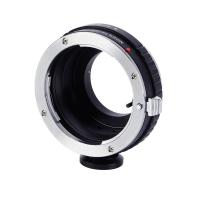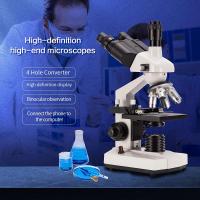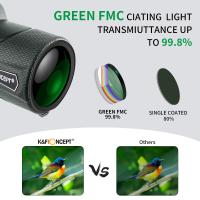Are Jellyfish Polyps Microscopic ?
No, jellyfish polyps are not microscopic. They are the stationary stage in the life cycle of a jellyfish and are typically visible to the naked eye.
1、 Jellyfish polyps: Overview and life cycle stages
Jellyfish polyps are not microscopic. They are actually the first stage in the life cycle of a jellyfish. Polyps are small, cylindrical organisms that attach themselves to a substrate, such as rocks or seaweed, in the ocean. They are typically a few millimeters to a few centimeters in size, depending on the species.
During this stage, the polyps reproduce asexually by budding, where new polyps grow out from the original one. This process can result in the formation of colonies of polyps. The polyps feed by extending their tentacles and capturing small prey, such as plankton, that pass by in the water.
After a period of time, the polyps undergo a process called strobilation, where they transform into a different stage of the jellyfish life cycle known as ephyrae. Ephyrae are small, disc-shaped organisms that are still attached to the substrate. They eventually break free and become free-swimming jellyfish.
It is important to note that the size and appearance of jellyfish polyps can vary depending on the species. Some polyps may be more elongated and slender, while others may be more bulbous in shape. Additionally, recent research has shed light on the diversity of jellyfish life cycles, with some species skipping the polyp stage altogether and developing directly from a planula larva into a juvenile jellyfish.
In conclusion, jellyfish polyps are not microscopic but rather small organisms that serve as the initial stage in the life cycle of a jellyfish. They play a crucial role in the reproduction and development of these fascinating creatures.
2、 Size of jellyfish polyps: Microscopic characteristics and measurements
Jellyfish polyps are indeed microscopic in size. These tiny organisms are the initial stage of the jellyfish life cycle and are responsible for the asexual reproduction of the species. They are typically found attached to surfaces such as rocks, shells, or seaweed in marine environments.
The size of jellyfish polyps can vary depending on the species, but they are generally very small, ranging from a few millimeters to a few centimeters in length. Some species may even be smaller than a millimeter. Due to their small size, they are often difficult to observe without the aid of a microscope.
Jellyfish polyps have distinct characteristics that differentiate them from other stages of the jellyfish life cycle. They have a cylindrical or vase-like shape, with a mouth surrounded by tentacles at one end. These tentacles are used for feeding and capturing prey. The body of the polyp is usually transparent or translucent, allowing light to pass through.
Recent research has shed light on the microscopic measurements and characteristics of jellyfish polyps. Advances in imaging technology have allowed scientists to study these organisms in greater detail. For example, high-resolution microscopy techniques have revealed the intricate structures of the polyp's body, including the arrangement of cells and the presence of specialized organs.
Furthermore, genetic studies have provided insights into the molecular mechanisms underlying the development and growth of jellyfish polyps. These studies have revealed the genes and signaling pathways involved in the formation of the polyp stage and its subsequent transformation into a jellyfish.
In conclusion, jellyfish polyps are indeed microscopic in size, typically ranging from a few millimeters to a few centimeters in length. Recent advancements in microscopy and genetic research have provided a deeper understanding of the microscopic characteristics and measurements of these fascinating organisms.
3、 Microscopic features of jellyfish polyps: Anatomy and structures
Jellyfish polyps are not typically considered to be microscopic. While they are small in size, ranging from a few millimeters to a few centimeters in length, they are still visible to the naked eye. However, it is important to note that the size of jellyfish polyps can vary depending on the species.
Jellyfish polyps are the initial stage of the jellyfish life cycle, and they are attached to a substrate such as rocks or seaweed. They have a cylindrical body with a mouth surrounded by tentacles, which they use to capture and consume small prey. The body of the polyp is composed of a gelatinous substance called mesoglea, which provides support and structure.
Recent research has shed light on the microscopic features of jellyfish polyps, particularly in terms of their anatomy and structures. Advanced imaging techniques, such as electron microscopy, have allowed scientists to examine the fine details of polyp tissues and organs. These studies have revealed intricate structures within the polyp, including specialized cells for feeding, reproduction, and defense.
Furthermore, recent research has also focused on the genetic and molecular aspects of jellyfish polyps. Scientists have identified specific genes and signaling pathways that regulate the development and growth of polyps. This knowledge has provided insights into the mechanisms underlying the transformation of polyps into the medusa stage, where they become the familiar free-swimming jellyfish.
In conclusion, while jellyfish polyps are not considered to be microscopic, recent research has provided a deeper understanding of their anatomy and structures at the microscopic level. This knowledge has contributed to our understanding of the complex life cycle of jellyfish and their ecological significance in marine ecosystems.
4、 Reproduction of jellyfish polyps: Microscopic aspects and processes
Jellyfish polyps are not necessarily microscopic. While some species of jellyfish polyps can be microscopic in size, others can be visible to the naked eye. The size of jellyfish polyps can vary depending on the species and environmental conditions.
Jellyfish polyps are the initial stage of the jellyfish life cycle. They are typically attached to a substrate, such as rocks or seaweed, and resemble small cylindrical or bell-shaped structures. These polyps are responsible for the asexual reproduction of jellyfish.
The reproduction of jellyfish polyps involves a process called budding. This is where new polyps develop as outgrowths from the parent polyp. These new polyps can then detach and become independent individuals. This method of reproduction allows jellyfish populations to rapidly increase in favorable conditions.
Recent research has shed light on the microscopic aspects and processes of jellyfish polyp reproduction. Studies have focused on understanding the cellular and molecular mechanisms involved in polyp budding and development. For example, researchers have identified specific genes and signaling pathways that regulate the growth and differentiation of jellyfish polyps.
Furthermore, advances in imaging techniques have allowed scientists to observe and analyze the intricate structures and processes of jellyfish polyps at a microscopic level. This has provided valuable insights into the development and reproductive strategies of these fascinating creatures.
In conclusion, while some jellyfish polyps can be microscopic, their size can vary depending on the species. Recent research has deepened our understanding of the microscopic aspects and processes involved in jellyfish polyp reproduction, highlighting the importance of studying these organisms at a cellular and molecular level.






















